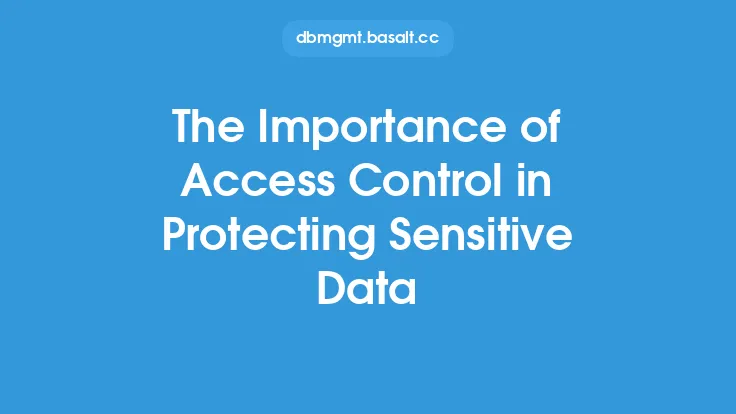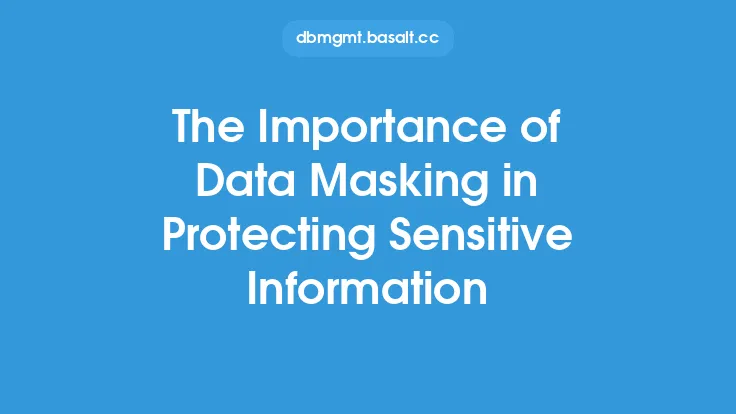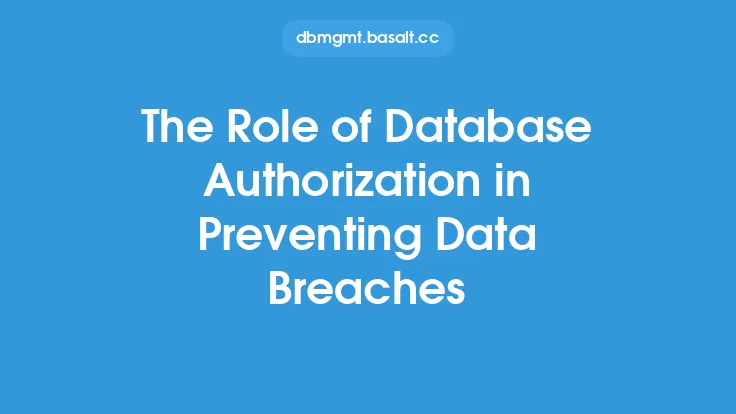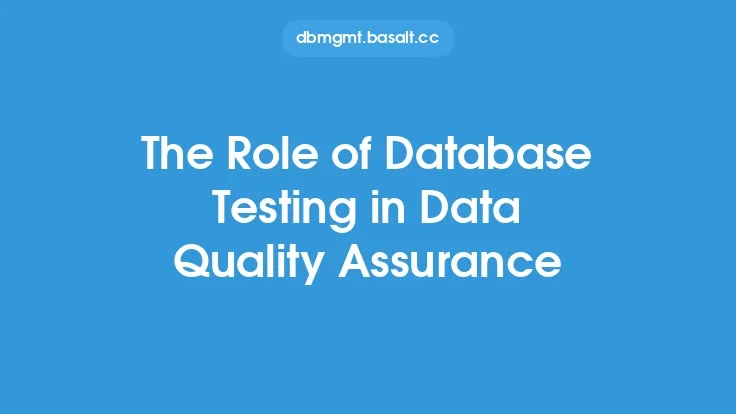Data encryption is a critical component of database security, playing a vital role in protecting sensitive data from unauthorized access. As the amount of data being generated and stored continues to grow, the need for effective data encryption has become more pressing than ever. In this article, we will delve into the world of data encryption, exploring its importance, benefits, and applications in protecting sensitive data.
Introduction to Data Encryption
Data encryption is the process of converting plaintext data into unreadable ciphertext, making it inaccessible to anyone without the decryption key. This ensures that even if an unauthorized party gains access to the encrypted data, they will not be able to read or exploit it. Data encryption can be applied to both data at rest (stored data) and data in transit (data being transmitted over a network). The encryption process involves the use of algorithms and keys to transform the plaintext data into ciphertext.
Benefits of Data Encryption
The benefits of data encryption are numerous, and its importance cannot be overstated. Some of the key benefits of data encryption include:
- Confidentiality: Data encryption ensures that sensitive data remains confidential, even if it falls into the wrong hands.
- Integrity: Data encryption helps to maintain the integrity of data by preventing unauthorized modifications or tampering.
- Authenticity: Data encryption can be used to verify the authenticity of data, ensuring that it has not been altered or tampered with during transmission or storage.
- Compliance: Data encryption is often a requirement for regulatory compliance, helping organizations to meet data protection standards and avoid costly fines.
Types of Data Encryption
There are several types of data encryption, each with its own strengths and weaknesses. Some of the most common types of data encryption include:
- Symmetric key encryption: This type of encryption uses the same key for both encryption and decryption.
- Asymmetric key encryption: This type of encryption uses a pair of keys, one for encryption and another for decryption.
- Hashing: This type of encryption uses a one-way algorithm to transform data into a fixed-length string of characters.
- Block cipher encryption: This type of encryption divides data into fixed-length blocks and encrypts each block independently.
Data Encryption Algorithms
Data encryption algorithms are the backbone of data encryption, providing the mathematical framework for transforming plaintext data into ciphertext. Some of the most commonly used data encryption algorithms include:
- Advanced Encryption Standard (AES): A symmetric key encryption algorithm widely used for encrypting data at rest and in transit.
- RSA (Rivest-Shamir-Adleman): An asymmetric key encryption algorithm commonly used for secure data transmission and digital signatures.
- Elliptic Curve Cryptography (ECC): A type of asymmetric key encryption algorithm that offers smaller key sizes and faster processing times.
Implementing Data Encryption
Implementing data encryption requires careful planning and consideration of several factors, including:
- Key management: The process of generating, distributing, and managing encryption keys.
- Encryption protocols: The set of rules and procedures governing the encryption and decryption process.
- Data classification: The process of categorizing data based on its sensitivity and importance.
- User authentication: The process of verifying the identity of users accessing encrypted data.
Challenges and Limitations of Data Encryption
While data encryption is a powerful tool for protecting sensitive data, it is not without its challenges and limitations. Some of the common challenges and limitations of data encryption include:
- Key management complexity: The process of managing encryption keys can be complex and time-consuming.
- Performance overhead: Data encryption can introduce performance overhead, slowing down data processing and transmission.
- Interoperability issues: Different encryption algorithms and protocols can create interoperability issues, making it difficult to share encrypted data between different systems and organizations.
Conclusion
In conclusion, data encryption is a critical component of database security, providing a powerful tool for protecting sensitive data from unauthorized access. By understanding the importance, benefits, and applications of data encryption, organizations can take the necessary steps to implement effective data encryption strategies and protect their sensitive data. As the threat landscape continues to evolve, the need for effective data encryption will only continue to grow, making it an essential aspect of any database security strategy.





